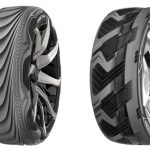It's Easier Here.
Leith Cars Blog

Every Friday we take a look at all the blog posts we’ve written during the week for our 33 dealerships, and choose one to highlight. Today that honor goes to Leith Toyota for their post about Toyota’s research into wireless hybrid recharging. Enjoy!
Well, that’s impressive. Wireless mobile phone charging has been a nice dream mainly relegated to airplane magazines for the past couple years for reasons that no one really knows. Even though our phones are more advanced computers than NASA had when they went to the moon, everyone still has to ask that fundamental question every once in a while: “Can I borrow your charging cable? I left mine [wherever].”
Even Apple—which has made some of the slickest, most powerful computer electronics in the world—was beside itself with excitement when they announced without a trace of irony that their new charging cable would have none of this 30-pin nonsense—it would have EIGHT pins and be REVERSIBLE.
Really?
Toyota is looking to do away with all that.
The company recently announced that they’re testing a wireless charging technology for their hybrid vehicles, which you currently have to plug-in using a gas pump styled handle. Toyota’s approach is to park your car onto a special pad, and that’s that. The pad will wirelessly recharge your battery.
Better yet, the automaker is integrating its parking assist technology so that you don’t have to worry about having your car in exactly the right spot—the car will do it for you (or at least tell you how—we’re still in the beta stage).
This is fantastic two-steps-forward thinking. Everyone knows that whatever changes will happen with cars’ fuel sources, changes in infrastructure will be needed. Because changing infrastructure is so expensive, it makes sense to go for the idea with the most longevity, which would likely be a technology that doesn’t yet exist in mass use.
Toyota already has three models of the plug-in Prius rolling around Japan right now testing out the idea in daily use and gathering data on its real-world feasibility. The idea is to let the three vehicles get in a year’s worth of testing, which should provide ample research to pore over. Interesting stuff.
More from my site







